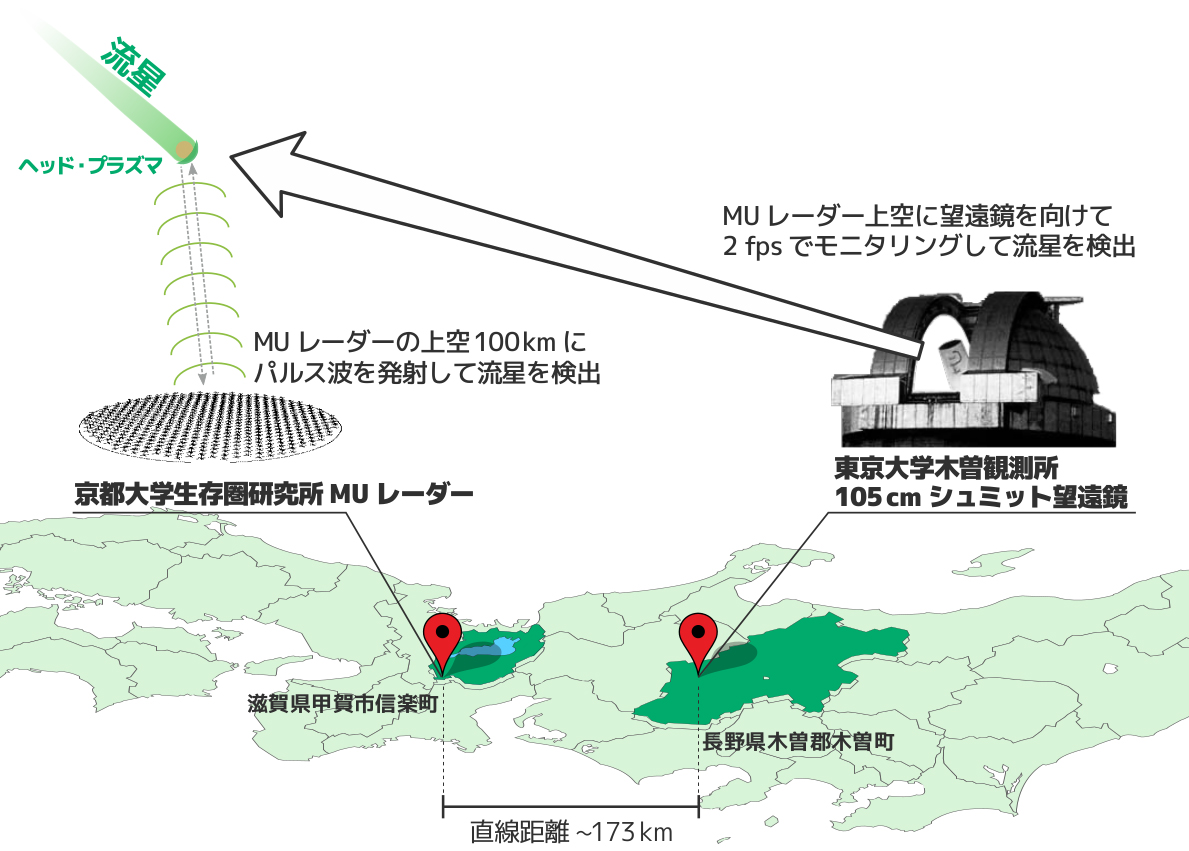Disclaimer: machine translated by DeepL which may contain errors.
Probing the Earth's Surrounding Environment through Observations of Micrometeorites
Ryo Osawa, Project Assistant Professor , Department of Astronomy |
Shigeyuki Sakamukai, Associate Professor, Department of Astronomy |


Small solar-system bodies such as comets and asteroids emit minute solid particles (dust) into interplanetary space due to their rotation, collisions, and cometary activity. Such dust reflects the properties of solar-system minor bodies. Near-Earth space is also filled with dust, and dust entering the Earth is observed as meteors. Observation of meteors is a unique research technique that allows us to measure the surface material of small solar-system bodies one particle at a time, and it is also an experiment in plasma physics due to high-speed collisions, which is difficult to reproduce in the laboratory.
Dust in the vicinity of the Earth is thought to consist mainly of particles with a mass of about 1 μg. However, meteors caused by such dust are too faint to be observed by radar. In order to extract the properties of dust particles from meteor phenomena, it is important to combine radar and optical measurements.
Therefore, we carried out a project to simultaneously measure meteors by radar and optical observations using the MU radar of the Research Institute for Sustainable Humanosphere, Kyoto University, which is the largest atmospheric radar in East Asia, and Tomoegosen, the world's largest video camera developed at the Kiso Observatory, The University of Tokyo. The high sensitivity of Tomoegosen enables us to detect meteors due to minute dust particles that could only be observed by radar. 228 scattered meteors that do not belong to a meteor shower were captured during the four-day observation, and a relation to estimate the brightness in visible light from the radar measurements (radar reflection cross section) was obtained experimentally. The equation for estimating the brightness in visible light from radar measurements (radar reflection cross section) was obtained experimentally.
 |
||
| Overview of simultaneous observations by the University of Tokyo's Kiso Observatory "Tomoegosen" and Kyoto University's MU radar. Meteors passing 100 km above the MU radar facility in Shiga Prefecture were captured simultaneously by radar and optical observations. | ||
By using this relation, we were able to utilize the meteor observation data accumulated by the MU radar from 2009-2015. The total amount of dust falling to the earth as scattered meteors was found to be about 10³ kg per day in the range measured by the MU radar. The development of new instruments has enabled us to measure the total amount of dust falling on the earth.
The development of the new instrument has paved the way for studying faint meteors from optical observations. In December 2020, the Hayabusa2 spacecraft successfully returned samples from the asteroid Ryuguu. Comparison with such samples is also an interesting development. The attempt to investigate the nature of dust around the Earth from meteor observations has just begun.
This study is based on R. Ohsawa et al . , Planetary and Space Science 194, 105011 (2020).
(Press release November 11, 2020)
Published in Faculty of Science News March 2021
Communicating to Faculty Research Students >


